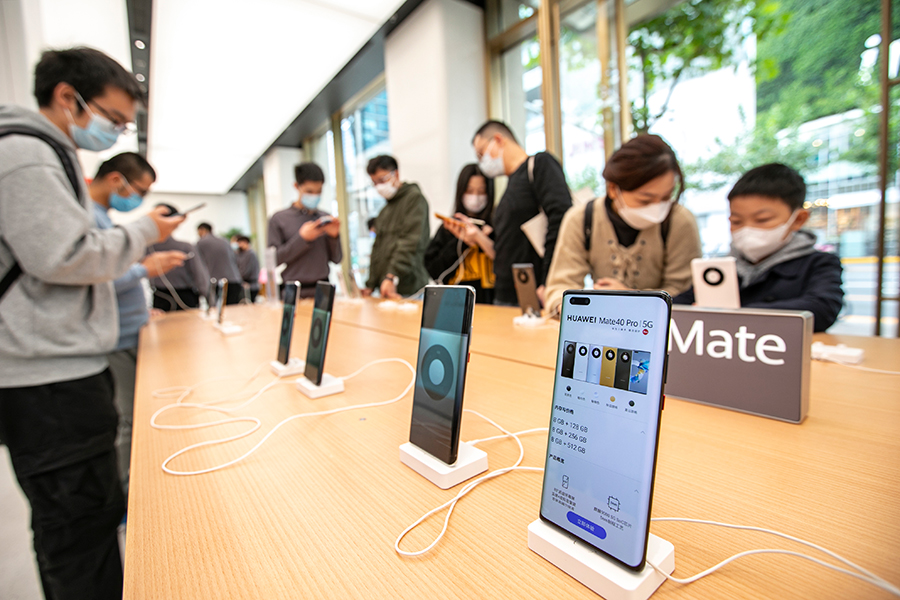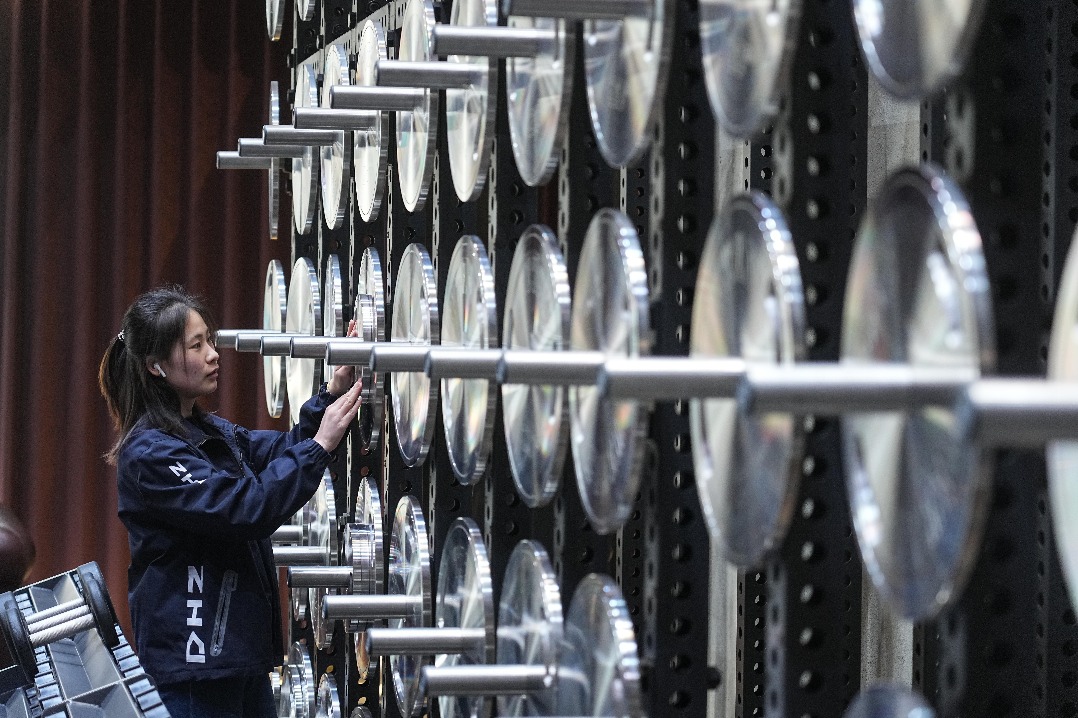Foldables, 5G handsets to fly


Shipments tipped to surge globally on innovative uses and affordable prices
Global shipments of foldable handsets are expected to surge 173 percent this year to about 11 million units, according to Sigmaintell Consulting, a Beijing-based market research firm.
About 9 million units will come from South Korean tech giant Samsung Electronics and around 2 million will come mainly from Chinese manufacturers, said Chen Jun, vice-president and chief analyst of Sigmaintell.
The research firm also said shipments of 5G-enabled smartphones in China are expected to rise 70 percent to 260 million units this year, with a penetration rate of 74 percent.
"The worldwide foldable smartphone shipments are set to witness rapid growth in the next few years, and the figure will reach 74 million units in 2025 from nearly 4 million in 2020," Chen said.
He said he expects foldable phone prices will likely drop to less than 10,000 yuan ($1,546) each this year, as major domestic players such as Oppo, Vivo and Xiaomi will jump on the bendable phone bandwagon. Google is also tipped to launch a foldable phone this year.
Such handsets could be used either as tablets or as pocket-size handsets.
According to Sigmaintell, global shipments of 5G smartphones will surge to 550 million units this year from 230 million units last year.
According to the latest data from the China Academy of Information and Communications Technology, 163 million 5G phones were shipped in China last year, and 218 new 5G models were rolled out.
With the launch of foldable mobile phones, shipments of organic light-emitting diode, or OLED, panels used in smartphones reached 83 million units in the Chinese market last year, Chen said. He predicted shipments will reach 100 million units this year, among which flexible OLED panels will account for 70 percent of all types of OLED panels.
OLED is a relatively new technology and part of the recent innovations in displays. It has a fast response rate, wide viewing angles, super high-contrast images and richer colors. It is much thinner and can be made flexible, compared with the traditional LCD display panel, industry experts said.
In the 5G era, OLED panels, which are foldable and flexible, will find broad application scenarios. They will likely afford a range of high-quality experiences for consumers, said Chen.
In terms of global shipments of OLED panels last year, Samsung may continue to rank first, according to Sigmaintell. "The penetration rate of OLED panels in smartphones will rise to 40 percent this year."
Domestic display panel suppliers such as BOE Technology Group Co Ltd, Visionox Technology Inc and China Star Optoelectronics Technology Co Ltd are banking on the flexible screens mainly used in smartphones. They are scaling up production capacities in a bid to break the monopoly of South Korean firms in the flexible screen industry.
BOE owns three sixth-generation active-matrix organic light-emitting diode, or AMOLED, production lines. It started mass production of the flexible panels from its facility in Chengdu, Sichuan province, in October 2017. The panels have already been used by more than 10 smartphone manufacturers.
The company's second production line in Mianyang, Sichuan province, began mass production in 2019, while its third facility in Chongqing is expected to start operations this year.
Xu Fengying, vice-president of Visionox, said flexible AMOLEDs will have wider applications in smartphones, computers, smart wearables, vehicles, virtual reality and augmented reality because of surging demand for flexible display screens.
Visionox's AMOLED display screen production line in Gu'an, Hebei province, began operations in 2018. It can produce 30,000 glass substrates every month, and meet the high-end, foldable screen demand for 90 million smartphones. It started building its second flexible AMOLED production line in Hefei, Anhui province, in December 2018.
"Chinese players led by Huawei, Oppo, Vivo and Xiaomi have now adopted OLED panels in their mid-tier portfolios ($300-$500) to differentiate their products. This is one of the key reasons for the growth of AMOLED smartphones," wrote Jene Park, a senior research analyst at Counterpoint Research, in a research note.
Li Yaqin, president of Sigmaintell, said the overall revenue of the global panel industry surpassed $114 billion last year, up 13 percent on a yearly basis, and the panel shipments also increased by 5 percent year-on-year.
Li said the display panel price will likely be relatively stable in the first half of this year on the back of supply-demand balance. "The price may fall if COVID-19 vaccines are widely available and good protective effects are achieved in the third quarter, and vice versa."




































